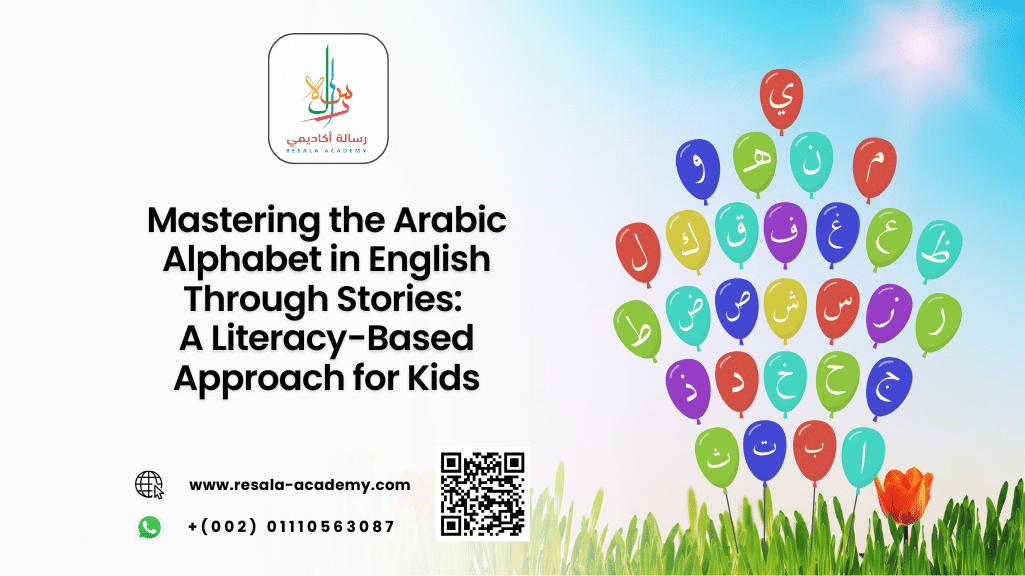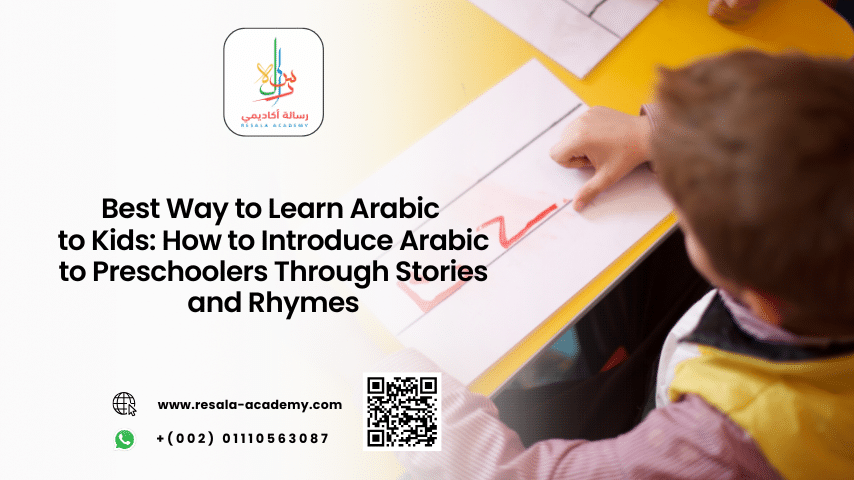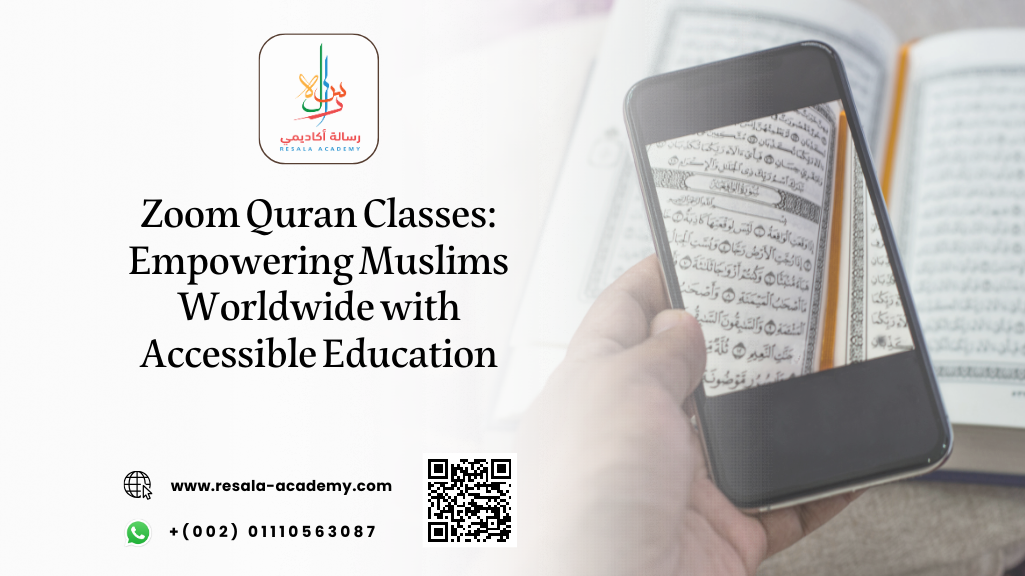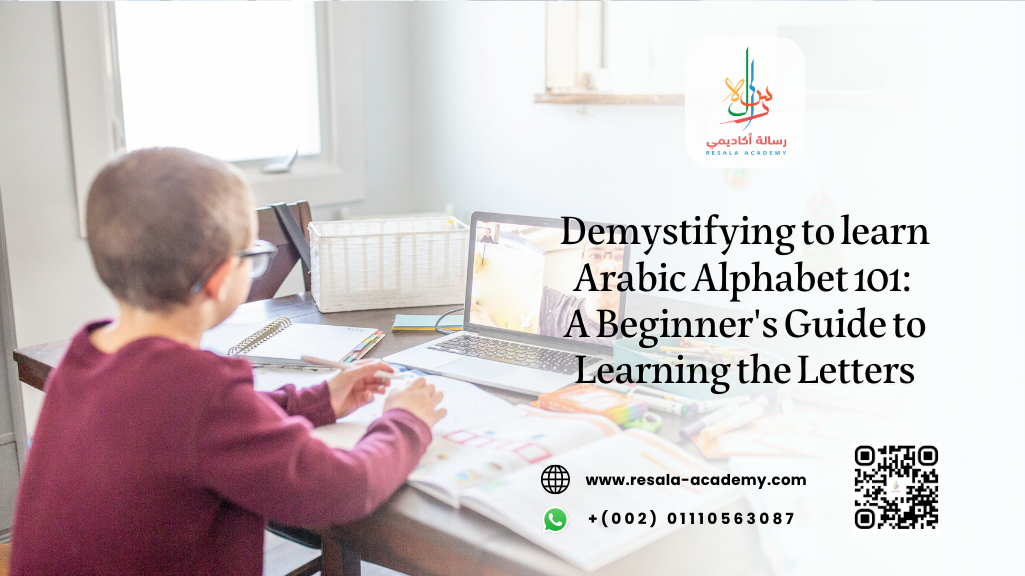Table of Contents
Mastering the Arabic Alphabet in English Through Stories: A Literacy-Based Approach for Kids
Learning a new language is a journey, and for children, that journey becomes more exciting when it’s filled with stories, characters, and imagination. For non-native speakers, especially kids, mastering the Arabic alphabet in English can seem like a daunting task.
However, with the right approach—one that blends storytelling with literacy-based techniques—this process can become not only effective but also enjoyable.
In this comprehensive guide, we’ll explore how children can learn the Arabic alphabet through stories, why this method is powerful, and how institutions like Resala Academy are revolutionizing Arabic education for non-native speakers.
Why Learn the Arabic Alphabet in English?
Understanding the Arabic alphabet in English is the first step toward mastering the Arabic language. For non-native speakers, especially English-speaking children, learning how to recognize, pronounce, and write Arabic letters using English transliteration and storytelling bridges the gap between unfamiliar symbols and familiar sounds.
Benefits of Learning Arabic for Kids
- Cognitive Development: Learning a second language enhances memory, problem-solving, and critical thinking.
- Cultural Awareness: Arabic is the fifth most spoken language globally and opens doors to rich cultural experiences.
- Religious Significance: For Muslim families, Arabic is essential for understanding the Quran.
The Structure of the Arabic Alphabet
The Arabic alphabet consists of 28 letters, written from right to left. Unlike English, Arabic is a cursive script, and letters change shape depending on their position in a word (initial, medial, final, or isolated).
Arabic Letter | Name | Transliteration | Pronunciation Guide |
أ | Alif | ʾ or a | Glottal stop or short “a” |
ب | Baa | b | Like “b” in “bat” |
ت | Taa | t | Like “t” in “top” |
ث | Thaa | th | Like “th” in “think” |
ج | Jeem | j | Like “j” in “jam” |
ح | Haa | ḥ | A strong “h” from the throat |
خ | Khaa | kh | Like “ch” in German “Bach” |
د | Daal | d | Like “d” in “dog” |
ذ | Dhaal | dh | Like “th” in “this” |
ر | Raa | r | Rolled “r” |
ز | Zay | z | Like “z” in “zoo” |
س | Seen | s | Like “s” in “sun” |
ش | Sheen | sh | Like “sh” in “shoe” |
ص | Saad | ṣ | Emphatic “s” |
ض | Daad | ḍ | Emphatic “d” |
ط | Taa | ṭ | Emphatic “t” |
ظ | Zhaa | ẓ | Emphatic “z” |
ع | Ayn | ʿ | A voiced pharyngeal sound |
غ | Ghayn | gh | Like the French “r” |
ف | Faa | f | Like “f” in “fun” |
ق | Qaaf | q | Deep “k” from the throat |
ك | Kaaf | k | Like “k” in “kite” |
ل | Laam | l | Like “l” in “love” |
م | Meem | m | Like “m” in “man” |
ن | Noon | n | Like “n” in “net” |
هـ | Haa | h | Like “h” in “hat” |
و | Waw | w or ū | Like “w” in “wonder” or “oo” in “moon” |
ي | Yaa | y or ī | Like “y” in “yes” or “ee” in “see” |
Storytelling: A Powerful Tool for Teaching the Arabic Alphabet
Children are naturally drawn to stories. They help in:
- Memory retention: Characters and plots make abstract letters memorable.
- Emotional engagement: Stories create a connection between the learner and the language.
- Contextual learning: Letters are introduced in meaningful settings.
Example Story: “Basma and the Magical Letters”
Let’s take a sample story that introduces the first three Arabic letters:
Arabic Text:
في يوم من الأيام، وجدت بسمة كتابًا قديمًا في العلية. عندما فتحته، خرج منه حرف “أ” وقال: “أنا ألف، أول حرف في الأبجدية!”
English Translation:
One day, Basma found an old book in the attic. When she opened it, the letter “Alif” jumped out and said: “I am Alif, the first letter of the alphabet!”
In this story, each letter comes to life and interacts with Basma, teaching her its sound, shape, and usage in words.
Literacy-Based Techniques for Teaching Arabic Letters
To reinforce learning, combine storytelling with literacy-based strategies:
1. Phonemic Awareness
Teach children to recognize the sound of each letter using English equivalents.
- Alif = A (as in apple)
- Ba = B (as in bat)
- Ta = T (as in top)
2. Visual Aids
Use colorful flashcards, illustrated books, and digital tools to show the letter in different positions.
3. Writing Practice
Introduce tracing worksheets and interactive writing apps that guide children in forming each letter.
4. Repetition Through Songs and Rhymes
Arabic alphabet songs help reinforce pronunciation and order.
Integrating the Arabic Alphabet in English into Multisensory Learning Environments
To deepen engagement and retention, especially for young non-native learners, incorporating the Arabic alphabet in English into multisensory learning environments is a game-changer.
This method stimulates multiple areas of the brain, making the learning process more dynamic and effective. Here’s how educators and parents can implement this strategy:
Tactile Letter Tracing with English Transliteration
- Use sandpaper letters or clay modeling to allow children to physically trace Arabic letters while saying their English equivalents (e.g., “Ba” for ب).
- This hands-on activity reinforces the shape and sound of each letter through muscle memory and auditory association.
Color-Coded Letter Mapping
- Assign specific colors to different groups of Arabic letters (e.g., throat letters, solar letters) and pair them with their English transliterations.
- Visual learners benefit from associating colors with sounds and shapes, making it easier to recall letter characteristics.
Memory Games with English Cues
- Create flashcards that feature the Arabic letter, its English name, and a picture that begins with that sound in Arabic.
- For example, the letter “ج” (Jeem) could be paired with “Jamal” (جمل – camel) and the English cue “J for Jeem.”
Audio-Visual Pairing with Story Elements
- Use animated videos that narrate short stories where each Arabic letter is introduced with its English transliteration and sound.
- This dual-language exposure builds phonetic awareness and helps bridge the gap between unfamiliar Arabic sounds and familiar English ones.
Advanced Letter Recognition Techniques Using the Arabic Alphabet in English
Once foundational recognition is established, the next step is to develop advanced letter recognition and contextual understanding. These techniques are especially useful for learners aiming to transition from basic literacy to fluent reading in Arabic, using the Arabic alphabet in English as a scaffold.
Contextual Letter Identification in Bilingual Sentences
- Introduce short bilingual sentences where Arabic letters are highlighted and matched with their English transliterations.
- Example: “The word ‘بيت’ (bayt) means house. It starts with the letter ‘ب’ (Ba).”
- This method reinforces letter recognition within real language use, not just isolated memorization.
Letter Sorting by Shape and Sound Families
- Group Arabic letters by similar shapes (e.g., ب، ت، ث) and sounds, then label them using English descriptors.
- This helps learners distinguish between visually similar letters and understand their phonetic differences.
Interactive Digital Quizzes with English Prompts
- Use gamified quizzes where learners are prompted in English to identify the correct Arabic letter.
- For instance: “Which letter makes the ‘th’ sound as in ‘think’? (Answer: ث – Tha).”
- These tools reinforce learning through repetition and active recall, essential for long-term retention.
Cultural Integration Through Letter-Based Exploration
- Assign each Arabic letter a cultural theme or Arabic-speaking country (e.g., “م” for Morocco – المغرب).
- This not only teaches the Arabic alphabet in English but also connects learners to the broader Arab world, enriching their cultural and linguistic understanding.
By leveraging these advanced techniques, learners can move beyond basic letter identification and begin to internalize the Arabic script as a living, functional part of language. This layered approach, when supported by platforms like Resala Academy, ensures a comprehensive and immersive learning experience.
Resala Academy: Pioneering Arabic Education for Non-Native Speakers
Resala Academy is a leading online platform dedicated to teaching Arabic and the Quran to non-native speakers. With a focus on children, their programs are designed to be:
- Interactive: Live classes with native Arabic-speaking teachers.
- Story-driven: Lessons built around engaging narratives.
- Flexible: Learn from anywhere, anytime.
What Makes Resala Academy Unique?
- Certified Arabic teachers with experience in child education.
- Personalized learning paths based on the child’s pace.
- Integration of Islamic studies and Quranic Arabic.
Real-Life Application: Using Stories to Teach Arabic Letters
Here’s how a Resala Academy class might look when teaching the letter “ج” (Jeem):
Story Context: Jamal (جمال) loves jumping. Every time he jumps, he shouts “Jeem! Jeem!”
Arabic Text:
جمال يحب القفز. كلما قفز، صاح: “جيم! جيم!”
Translation:
Jamal loves jumping. Every time he jumps, he shouts: “Jeem! Jeem!”
This approach embeds the letter “ج” in a fun, memorable context, reinforcing recognition and pronunciation.
Building Vocabulary Through Stories
Each story introduces new vocabulary that includes the target letter. For example:
- Letter ب (Ba):
- باب (baab) – door
- بنت (bint) – girl
- بحر (bahr) – sea
- Letter ت (Ta):
- تفاح (tuffaah) – apple
- تمر (tamr) – dates
- كتاب (kitaab) – book
These words are then used in the story, allowing children to see them in action.
Ready to master Quranic reading from the basics? Start your journey with Noorani Qaida Online and unlock the path to fluency—Read now!
How Parents Can Support Learning at Home
Parents play a crucial role in reinforcing what children learn in class. Here are some tips:
- Read Arabic storybooks with English translations.
- Create letter-themed crafts (e.g., making a “Ba” boat).
- Use educational apps.
Enroll in the Magic of Arabic: Join Resala Academy Today!
Are you ready to unlock your child’s potential in Arabic? Let Resala Academy be your trusted guide on this exciting journey. With expert teachers, engaging stories, and a flexible online platform, your child will not only learn the Arabic alphabet in English but also fall in love with the language.
Whether your goal is to help your child understand the Quran, connect with Arabic culture, or simply gain a new skill, Resala Academy’s Arabic course online offers the perfect starting point.
Click here to book a FREE trial class and watch your child’s Arabic adventure begin!
Frequently Asked Questions (FAQs)
1. What is the best way to teach the Arabic alphabet to non-native kids?
The most effective method combines phonics, storytelling, and visual aids. Using English transliteration helps bridge the gap for non-native speakers. Platforms like Resala Academy specialize in this approach.
2. Can children learn the Arabic alphabet without knowing Arabic?
Yes! By using English explanations and transliterations, children can start learning the Arabic letters and their sounds before diving into full vocabulary or grammar.
3. How long does it take for a child to learn the Arabic alphabet?
With consistent practice, most children can learn the Arabic alphabet in 4–6 weeks. Resala Academy’s structured programs help accelerate this process through engaging lessons.
4. What age is best to start learning Arabic?
The earlier, the better! Children as young as 3 can begin learning the Arabic alphabet through songs and stories. Resala Academy offers tailored programs for different age groups.
Conclusion
Mastering the Arabic alphabet in English doesn’t have to be a struggle. Through storytelling, phonics, and interactive learning, children can build a strong foundation in Arabic that will serve them for life. By making each letter a character, each word a journey, and each lesson an adventure, kids not only learn—they thrive.
And with Resala Academy by your side, this journey becomes smoother, smarter, and more joyful. Enroll today and let your child discover the magic of Arabic through stories that speak to the heart and mind.




